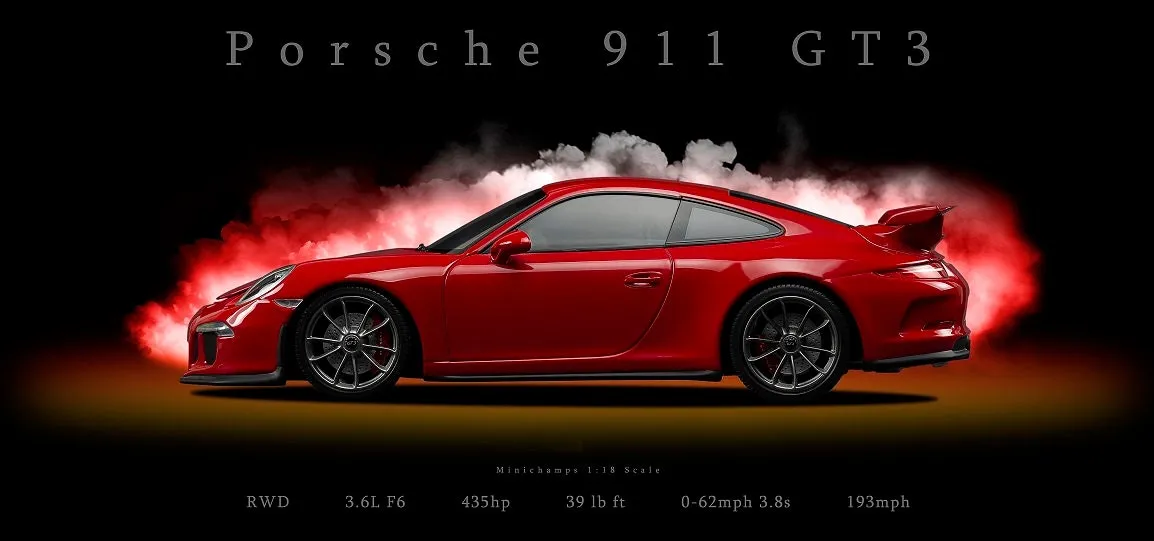The Allure of Porsche GT3 Touring Diecast
The Porsche GT3 Touring is a marvel of automotive engineering, celebrated for its raw performance and understated elegance. The allure of owning a miniature version, a Porsche GT3 Touring diecast model, is undeniable. These meticulously crafted replicas capture the essence of the real car, offering enthusiasts a tangible connection to the Porsche legacy. Whether you’re a seasoned collector or a passionate admirer of the GT3 Touring, these diecast models provide a unique opportunity to appreciate the car’s design, engineering, and historical significance. Diecast models allow fans to experience the thrill of owning a Porsche GT3 Touring without the significant financial investment and maintenance of the full-sized vehicle. They represent a perfect blend of art and automotive passion, making them highly sought-after items for collectors worldwide.
Exquisite Detailing and Accuracy
One of the primary features that sets a high-quality Porsche GT3 Touring diecast apart is its exquisite detailing and accuracy. Manufacturers go to great lengths to replicate every curve, contour, and component of the original car. This includes accurately rendered interiors, complete with seats, dashboards, and steering wheels. Exterior details are equally impressive, with realistic headlights, taillights, and badging. The paint finishes often mimic the original Porsche colors, adding to the model’s authenticity. The level of detail extends to the engine bay, where the iconic flat-six engine is often meticulously recreated. These models are not just toys; they are miniature works of art that capture the spirit of the Porsche GT3 Touring, providing a level of realism that captivates both casual observers and dedicated collectors. The meticulous attention to detail is a testament to the craftsmanship involved in producing these models.
Scale and Proportions

The scale of a diecast model is a crucial factor in its overall appeal and accuracy. Common scales for Porsche GT3 Touring diecast models include 1:18, 1:24, and 1:43. Each scale offers a different perspective on the car, with 1:18 models being the largest and most detailed, allowing for intricate features. The proportions of the model must be accurate to the original vehicle to ensure a realistic representation. Experienced collectors often prioritize models that are faithful to the car’s dimensions and design. The scale of the model also affects the level of detail possible, with larger scales generally allowing for more intricate features. The choice of scale often depends on the collector’s preferences, available display space, and the desired level of detail. Ensuring the model’s proportions are correct is paramount for the diecast’s overall authenticity and collectible value.
Material and Construction
The materials and construction of a Porsche GT3 Touring diecast model play a significant role in its durability, weight, and overall quality. Diecast metal is the primary material used for the body and chassis, providing the model with its weight and a premium feel. Other materials, such as plastic and rubber, are used for the interior details, wheels, and tires. High-quality diecast models are constructed with precision, using durable materials that can withstand handling and display. The assembly process is also critical, with careful attention paid to fitting the components together seamlessly. The use of high-quality materials and robust construction techniques ensures that the model will last for years and retain its value over time. The combination of diecast metal with carefully chosen plastic and rubber parts creates a model that is both realistic and enduring.
High-Quality Paint Finish
The paint finish is a defining characteristic of any premium Porsche GT3 Touring diecast model. The paint should be smooth, even, and applied with precision to replicate the original car’s finish. High-quality diecast models often use multiple layers of paint, along with clear coats, to achieve a deep, lustrous appearance. The paint colors should accurately match the official Porsche color options, further enhancing the model’s authenticity. Metallic finishes, such as those found on many Porsche models, require a precise application of metallic flakes to create the desired effect. The paint finish not only contributes to the model’s aesthetic appeal but also protects the underlying diecast metal from corrosion. A flawless paint job is a sign of craftsmanship and attention to detail, making it a key feature for collectors. The finish is often a deciding factor for many potential buyers when choosing a diecast model for their collection.
Functionality and Features

Beyond the static appearance, many Porsche GT3 Touring diecast models incorporate functional features that add to their realism and collectibility. These features can include opening doors, hoods, and trunks, allowing collectors to view the detailed interiors and engine compartments. Some models also have rolling wheels and working steering, adding to the playability and display options. Other advanced features may include adjustable suspension, realistic seatbelts, and even working lights. These functional elements enhance the overall experience of owning a diecast model, making it feel more like a miniature version of the real car. The inclusion of these features increases the appeal of the model to both collectors and enthusiasts who appreciate the added level of realism and detail. Features vary between manufacturers and scales, but they always aim to enhance the overall experience.
Collector’s Appeal and Value
Porsche GT3 Touring diecast models hold significant appeal for collectors, offering a blend of artistry, automotive history, and investment potential. Limited edition models, those with rare color combinations, or those that are exceptionally well-detailed often increase in value over time. The collectible value is driven by factors such as rarity, demand, condition, and the manufacturer’s reputation. Dedicated collectors often seek specific models to complete their collections, driving up the prices of hard-to-find items. The value of a diecast model can also be influenced by the model’s historical significance, the car’s real-world popularity, and the model’s level of detail and accuracy. Collecting these models allows enthusiasts to engage with the Porsche brand on a deeper level and offers the potential for a rewarding investment. The collector’s market is dynamic and influenced by many factors.
Rarity and Limited Editions
Rarity and limited editions are highly prized characteristics in the world of Porsche GT3 Touring diecast models. Manufacturers often produce limited runs of specific models, using unique paint colors, interior trims, or other distinctive features to set them apart. These limited editions quickly become sought after by collectors, driving up their value and desirability. The scarcity of these models makes them a symbol of exclusivity and can significantly enhance a collection’s prestige. Collectors actively seek out these rare models, often attending exclusive events and utilizing online marketplaces to locate them. The limited availability adds a layer of excitement and challenge to the collecting hobby, as enthusiasts compete to secure these valuable pieces. Owning a rare diecast model is a testament to the owner’s dedication and knowledge of the Porsche brand and the diecast hobby.
